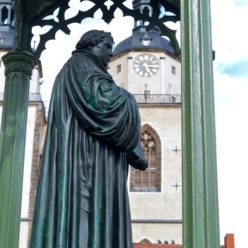M. Kordts; A. Kerth; D. Hinderberger
Institute of Chemistry; Martin Luther University Halle-Wittenberg; Von-Danckelmann-Platz 4, 06120 Halle (S.); Germany
Hydrophobins are small amphiphilic proteins (~ 7-10 kDa) produced by filamentous fungi that self-assemble at interfaces. They are divided into two classes based on hydropathy plots and solubility. By forming extremely stable amphipathic membranes, foams and emulsions hydrophobins are thought to fulfill a great variety of tasks during the fungal lifecycle such as coating of airborne spores and facilitating contact between fungus and host during infection. [1] Their ability to modify surfaces is of great interest in many fields such as medicine, material science and cosmetics. [2] To harness this ability to its full potential the exact mechanisms of the self-assembly process at interfaces and in solution must be better understood on a molecular level.
Class I hydrophobins are characterized as highly insoluble and known to form stable amyloid fibrils called rodlets at the air-water-interface. We investigated the self-assembled structures of class I hydrophobin SC3 at the air-water-interface using a Langmuir-filmbalance coupled with a fluorescence microscope. The use of two dyes of different hydropathy showed the potential to force the protein into different superstructures of several micrometers in dimension upon compression. To our knowledge, this difference in self-assembled superstructure has not been visualized before. Future investigations using Atomic Force Microscopy (AFM) are planned to investigate their underlying structures on a scale of several nanometers.
Furthermore, we attempted to covalently attach 3-Maleimido-PROXYL to the N-terminus of SC3. This stable radical can be investigated using electron paramagnetic resonance (EPR) spectroscopy in order to examine the self-assembly of the protein in solution. Again, to the best of our knowledge, no such experiments have been reported before. We are hoping to get a coherent picture of the aggregation that can then be compared to that of class II hydrophobins, which generally differ in their dominant interfacial structure.
References
[1] V. Aimanianda et al., Nature 460, 1117-1121 (2009) (link)
[2] H. J. Hektor and K. Scholtmeijer, Curr. Opin. Biotechnol. 16, 434-439 (2005) (link)
